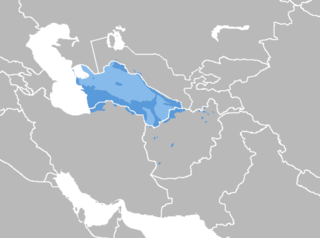Related Research Articles
The term dialect can refer to either of two distinctly different types of linguistic phenomena:
In phonetics, labiodentals are consonants articulated with the lower lip and the upper teeth.
The Lechiticlanguages are a language subgroup consisting of Polish and several other languages and dialects that were originally spoken in the area. It is one of the branches of the larger West Slavic subgroup; the other branches of this subgroup are the Czech–Slovak languages and the Sorbian languages.
In sociolinguistics, a variety, also called an isolect or lect, is a specific form of a language or language cluster. This may include languages, dialects, registers, styles, or other forms of language, as well as a standard variety. The use of the word "variety" to refer to the different forms avoids the use of the term language, which many people associate only with the standard language, and the term dialect, which is often associated with non-standard varieties thought of as less prestigious or "correct" than the standard. Linguists speak of both standard and non-standard (vernacular) varieties. "Lect" avoids the problem in ambiguous cases of deciding whether two varieties are distinct languages or dialects of a single language.

Turkmen, also referred to as Turkmen-Turkic or Turkmen-Turkish, is a Turkic language spoken by the Turkmens of Central Asia, mainly of Turkmenistan, Iran and Afghanistan. It has an estimated five million native speakers in Turkmenistan, a further 719,000 speakers in Northeastern Iran and 1.5 million people in Northwestern Afghanistan. Turkmen has official status in Turkmenistan, but it does not have official status in Iran or Afghanistan, where big communities of ethnic Turkmens live. Turkmen is also spoken to lesser varying degrees in Turkmen communities of Uzbekistan and Tajikistan and by diaspora communities, primarily in Turkey and Russia.
Torres Strait Creole, also known as Torres Strait Pidgin, Brokan/Broken, Cape York Creole, Lockhart Creole, Kriol, Papuan, Broken English, Blaikman, Big Thap, Pizin, and Ailan Tok, is an English-based creole language spoken on several Torres Strait Islands of Queensland, Australia; Northern Cape York; and south-western coastal Papua New Guinea (PNG).
Ndyuka, also called Aukan, Okanisi, Ndyuka tongo, Aukaans, Businenge Tongo, Eastern Maroon Creole, or Nenge is a creole language of Suriname and French Guiana, spoken by the Ndyuka people. The speakers are one of six Maroon peoples in the Republic of Suriname and one of the Maroon peoples in French Guiana. Most of the 25 to 30 thousand speakers live in the interior of the country, which is a part of the country covered with tropical rainforests. Ethnologue lists two related languages under the name Ndyuka, the other being a dialect of Lutos.
Bali may refer to any of several languages:
The Kukuya language, Kikukuya[kìkýkȳā], also transcribed Kukẅa and known as Southern Teke, is a member of the Teke dialect continuum of the Congolese plateau. It is the only language known to have a phonemic labiodental nasal. The name of the language comes from the word kuya "plateau".
West Teke is a Bantu language spoken in the Republic of Congo and Gabon.
East Teke is a member of the Teke dialect continuum of the Congolese plateau. The dialects Mosieno and Ŋee (Esingee) may constitute a separate language from Tio also known as Bali (Ibali).
Central Teke is a member of the Teke languages dialect continuum of the Congolese plateau. Central Teke dialects are Ngungwel and Mpu (Mpumpum), Boo, and Nzikou (Njyunjyu/Ndzindziu). They are spoken in the Malebo Pool region of the Republic of Congo, with an unknown number of Boo speakers in DRC.
The Kimbundu languages are a group of Bantu languages coded Zone H.20 in Guthrie's classification. According to Nurse & Philippson (2003), they probably form a valid node, though this is still uncertain. They are:
Songo (Nsongo) is a Bantu language of Angola. It is similar to North Mbundu, and is often considered a dialect of that language. The true relationship may be a regional influence since it has been suggested that Nsongo and Teke, and its relatives, are close.
Sakata is a Bantu dialect cluster of DR Congo. The dialects are rather divergent: Sakata proper, Djia (Wadia), Bai (Kibay), Tuku.
North Teke, or Tɛgɛ, is a member of the Teke languages dialect continuum of the Congolese plateau.
The Tsege language, Tchitchege, is a member of the Teke dialect continuum of the western Congo Basin.
Baduy or Badui is a dialect of Sundanese language spoken by the Baduy people. Native speakers of the language are spread in Mount Kendeng, Rangkasbitung district of Lebak Regency, Pandeglang Regency and Sukabumi, West Java, Indonesia. It is estimated that there are 11,620 speakers as of 2010.

Teke is a major and politically influential tribe of Turkmens in Turkmenistan.
References
- ↑ Fuumu at Ethnologue (18th ed., 2015)
- ↑ Jouni Filip Maho, 2009. New Updated Guthrie List Online